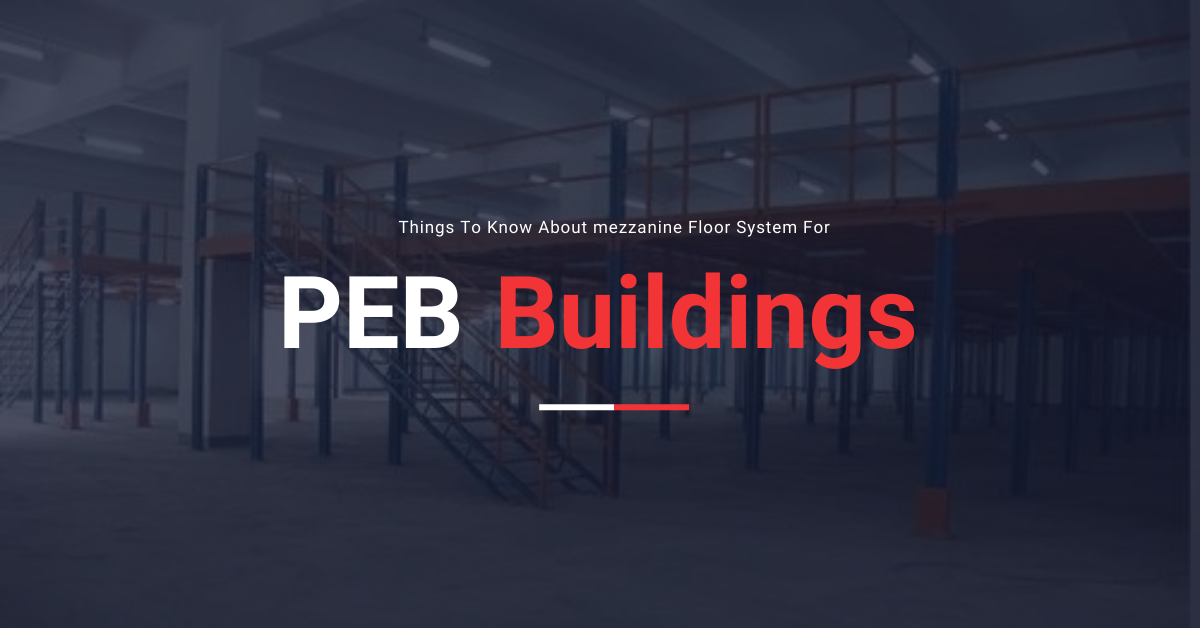A mezzanine floor system for pre-engineered buildings (PEB) is a valuable addition that can significantly enhance the functionality and versatility of such structures. Mezzanine floors are intermediate floors installed between the main ground floor and the roof, providing additional space for various purposes. This discussion will examine several key aspects and considerations regarding mezzanine floor systems for PEB buildings.
Structural Integration:
The foremost thing you should understand about the mezzanine floor is that it should be carefully integrated into the PEB steel structural building. Also, it should bear the load capacity without compromising the building’s structural integrity. This integration ensures the safety and longevity of the structure.
Purpose & Function:
Mezzanine floors in PEB buildings can serve a variety of functions. These floors are commonly used for offices, storage, manufacturing, or retail space. Hence, the mezzanine flooring should be constructed per the requirements by understanding the flooring’s purpose.
Load-Bearing Capacity:
Mezzanine floors are designed to carry a specific load, which may vary depending on the intended use. Determining the load-bearing capacity required for your mezzanine from PEB building manufacturers like Metfraa will help to accommodate the intended activities and store items safely.
Material Selection:
Another crucial thing about the mezzanine floor is choosing the suitable floor material. The standard options for these flooring include concrete, steel, or combination. However, steel is the preferred material for mezzanine floors that aligns with the efficiency of PEB buildings.
Modularity:
The beauty of PEB buildings lies in their modularity, and mezzanine floors should follow suit. A modular mezzanine system can be easily installed, removed, or reconfigured to adapt to changing needs.
Access & Egress:
Consideration should be given to safe and efficient access and egress to and from the mezzanine level. It includes staircases, ramps, or even lifts, depending on the intended use and accessibility requirements.
Fire Safety:
Fire safety is paramount in any building, and mezzanine floors should be equipped with appropriate fire protection measures. It may include fire-resistant coatings or sprinkler systems.
Maintenance & Durability:
Mezzanine floors, like any other part of the building, require maintenance. Choosing durable materials and finishes can reduce long-term maintenance costs and extend the structure’s lifespan.
Customization:
Mezzanine floors are highly customizable, allowing you to design a space that precisely meets your requirements. From the layout to the finish, customization options are virtually limitless.
Professional Design & Engineering:
Engaging professional architects and engineers from PEB companies in Chennai, like Metfraa, with experience in mezzanine design and PEB construction is advisable. Their expertise ensures the mezzanine is safely integrated into the existing structure and complies with all relevant codes and regulations.
A mezzanine floor system for PEB buildings can be a versatile and cost-effective solution to maximize space utilization. Proper planning, structural integration, adherence to safety standards, and customization are critical elements in creating a successful mezzanine. When designed and installed with care, a mezzanine floor can significantly enhance the functionality and value of a pre-engineered building. Contact Metfraa for more information.



